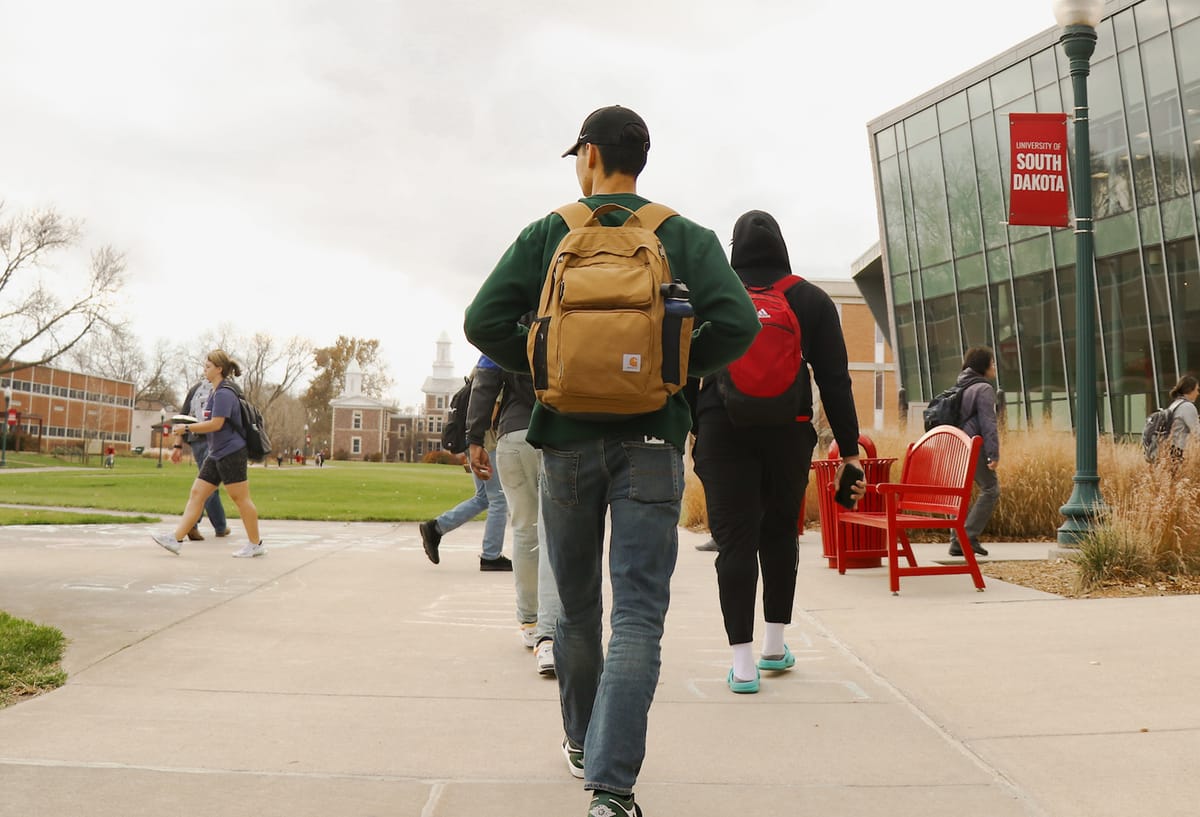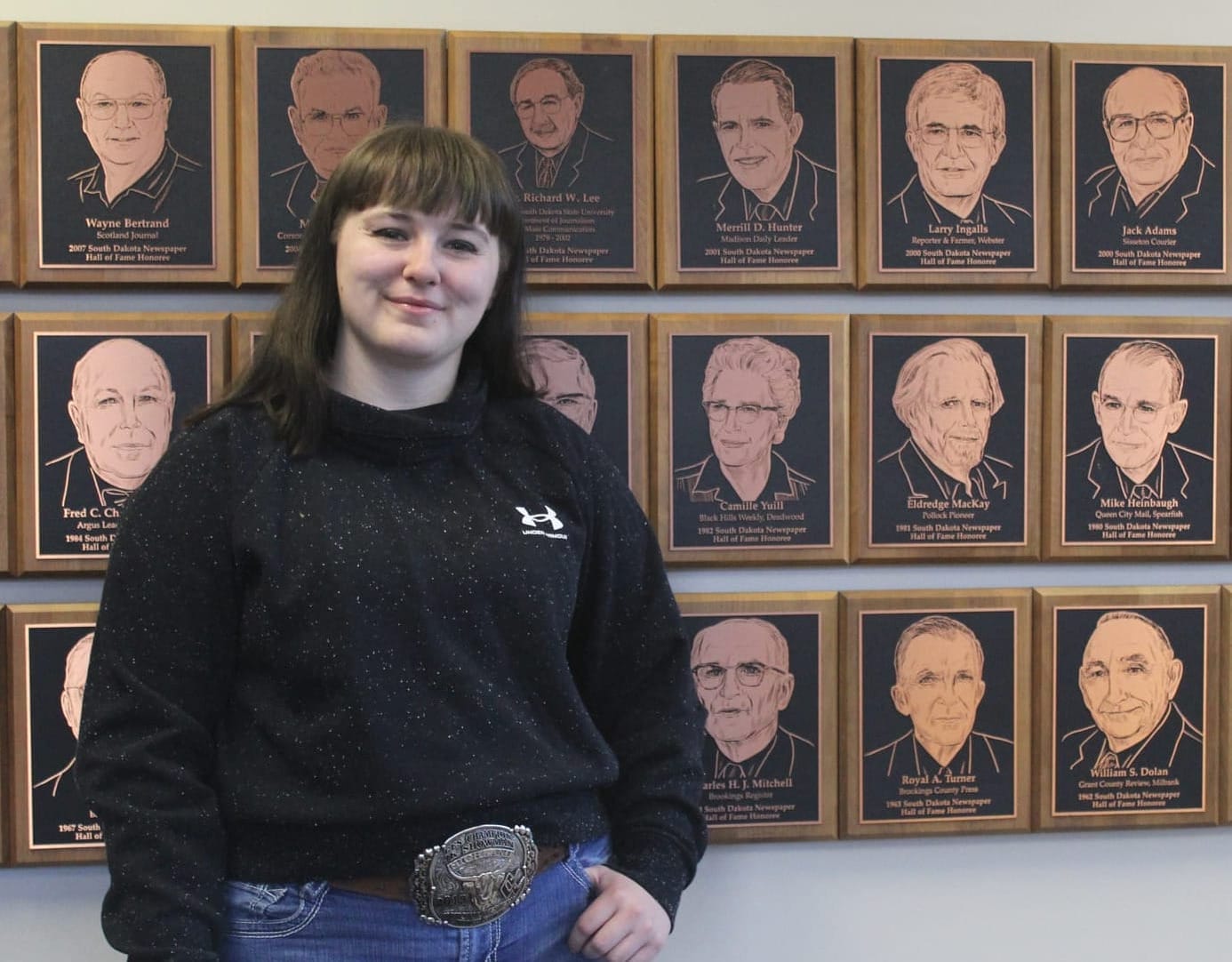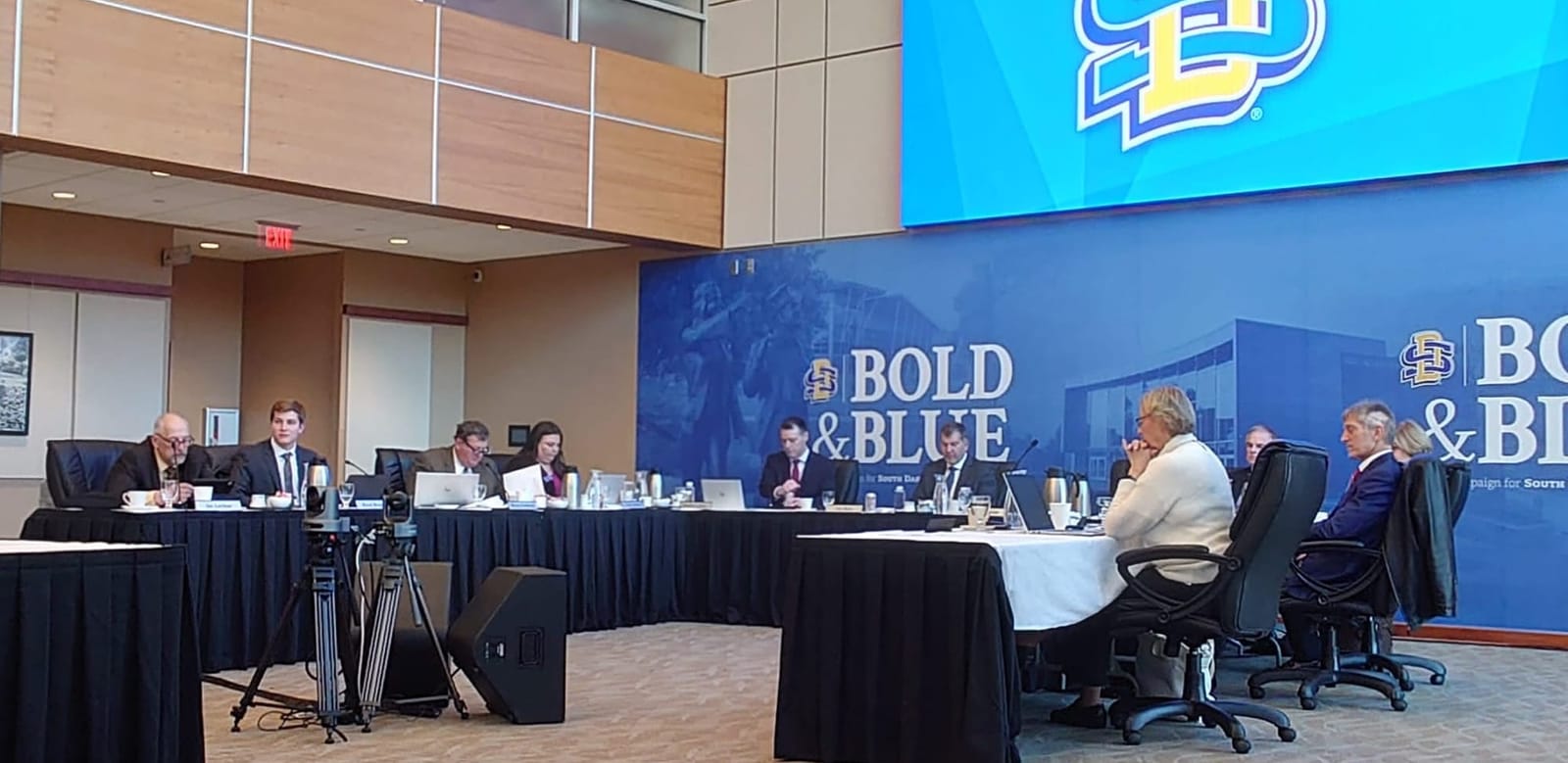Editor's note: This is an update of a story published Dec. 8, 2023.
BROOKINGS, S.D. – The Board of Regents unanimously approved an expansion to its South Dakota Advantage program Thursday that will grant resident tuition rates to three other states.
Incoming students from Minnesota, Kansas and Missouri will be able to attend South Dakota's six public universities at the same cost as South Dakota residents starting in the summer semester of 2024.
"This continues to increase the momentum as it relates to our enrollment efforts regionally and trying to draw in people from all over our seven-, eight-, nine- or 10-state region," board Vice President Jeff Partridge said during the meeting at South Dakota State University. "I look forward to the continued efforts of momentum that we have in enrollment."
Universities face enrollment cliff
Since fewer children were born during the 2007-2009 recession, there will be fewer college-aged kids over the next several years. In order to mitigate enrollment declines, universities' outreach efforts will become more crucial than ever, said Tim Rave, regents president.

"It's becoming an increasingly competitive market and we're doing all we can to attract students to South Dakota," said Nathan Lukkes, executive director and CEO of SDBOR. "With the higher education landscape changing drastically and some of the demographic challenges coming up in the next decade, borders are becoming less and less important. And everybody's vying for the same students."
The South Dakota Advantage program, which began in fall 2019, granted in-state tuition rates for Iowa, Nebraska, North Dakota, Wyoming, Montana and Colorado residents. Illinois and Wisconsin were added to the list in 2023.
A previous reciprocity agreement with Minnesota allowed residents to pay the higher amount between their home-state tuition and the South Dakota campus they attend, according to the Board of Regents. Bringing Minnesota into the program will save incoming Minnesota residents attending a South Dakota public university upward of $600 per semester.
Since the in-state rate is only available to incoming students, Minnesota students already enrolled at a South Dakota universities will not see those savings.
"We don't want to penalize those students that are in our system right now by taking them to the nonresident rate," Heather Forney, SDBOR’s system vice president of finance and administration. "What we would do is ... offer a rate for those existing Minnesota students at something similar to what they're currently paying through Minnesota reciprocity."
Existing students from Kansas and Missouri will continue to pay the out-of-state tuition rate.
Program has proven success
Jim Rankin, president of South Dakota School of Mines and Technology in Rapid City, told News Watch the South Dakota Advantage is making his university more competitive in farther-away markets.
"I think we've got over 350 Colorado students, probably about just under 15% of our students," he said. "We didn't have those kinds of numbers in the past."
SDBOR enrollment data show out-of-state enrollment growth for first-time freshmen from each state in the initial South Dakota Advantage program. The exception is Iowa, which along with Nebraska were already granted in-state tuition.
According to SDBOR, here are the enrollment changes of first-time freshmen from surrounding states between fall 2018 and fall 2023:
- Iowa: 483, 437
- Nebraska: 266, 402
- Colorado: 112, 149
- North Dakota: 64, 96
- Wyoming: 50, 82
- Montana: 21, 33
The data also show total nonresident enrollment climbing in the SDBOR system from 12,700 in fall 2021 to 13,308 in fall 2023.
Building the state's future
Board secretary Douglas Morrison, who is originally from California, said that his choice to attend the University of South Dakota in Vermillion is the reason he ended up working in the Midwest.
"It created a stickiness which allowed me to stay in this state," he said. "I had lots of choices. I was able to overcome that out-of-state tuition, but not every kid is. If we're going to expand the workforce in South Dakota, this is a great way to get to school here and create that stickiness so they stay and join our workforce."
Lukkes told News Watch that 23% of nonresident graduates stayed in South Dakota after graduation in 2019. By 2022, it had risen to over 28%.
"Last year we had 793 nonresident graduates that stayed and entered the workforce in South Dakota," he said. "The year before was 768, and the year before that 742. It's a critical piece of our workforce puzzle as we continue to struggle with shortages in education, health care and business."
Shawn Hembolt, assistant vice president for enrollment management at South Dakota State University, agrees.
"We know that if we can get them here, enrolled at our university, have them spend four quality years here in South Dakota, the chances of them staying in South Dakota and helping enhance our workforce and our state is even greater," he said.
Scrapping the out-of-state tuition rate for nearby markets means the universities make less money off of each student. But Rankin said the program is a net gain overall.
"You're charging a little less to those out-of-state students coming in. But at the same time, you're hoping to bring in more students that wouldn't have come here in the first place," he said. "What we really want to see is that increased enrollment, which will make up for that decrease in tuition."
Forney told the board there are about 4,500 students in the system who are from the first eight states in the South Dakota Advantage program. Those students saved about $10.6 million, but generated about $57.8 million for the universities, she said.
“This is a good deal for us and gets those students in the doors and helps to fill up our residence halls with students that are participating in our meal plans and are a part of our campus life,” Forney said.
In-state tuition tips the scales
RuthAnn Holmes, a Wyoming native, is a senior at SDSU majoring in agricultural communication. After graduating from high school in 2020, it wasn't very clear where she'd end up.

"I had three big options," Holmes said. "I had Colorado State, Texas A&M and SDSU. They all have really strong animal science and meat science degrees I was interested in."
Holmes said being offered in-state tuition tipped the scales in favor of coming to South Dakota.
"I feel it's very important because I, by myself, am the one paying for tuition and I don't have assistance from my parents in paying for that," she said. "Paying in-state tuition made (college) a lot more financially available for me."
Holmes estimates SDSU's more affordable education saved her about $20,000 from her second-choice pick, Colorado State University. She said she's open to staying in South Dakota after graduating.
Some distant states are closer than in-state points
Brock Brown, who serves on the regents as a student, said most of his classmates at the University of South Dakota School of Law are from out-of-state, which shows the benefit of the lower tuition rates.
"Something they talk about constantly as the reason they chose to attend USD's law school is because of the cost compared to their own state," he said.
Brown also pointed out the distance between SDSU in Brookings and Black Hills State University in Spearfish is greater than the distance from SDSU to the Wisconsin, Missouri and Kansas borders.
"I think this (program) makes us competitive in states a little further away and it gets some students that may not have looked at us to look at South Dakota a lot harder," Rankin said.




